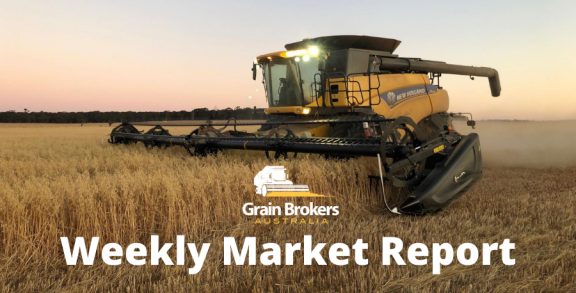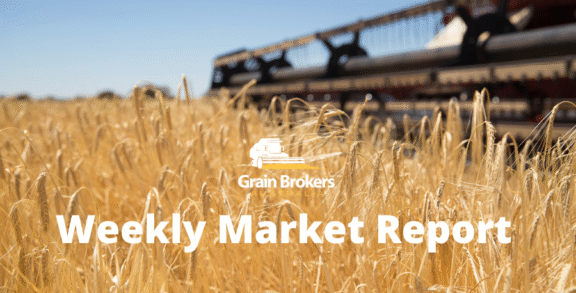
Late winter and early spring rainfall are likely to be above average for most of Australia, according to the latest climate outlook overview released by the Bureau of Meteorology (BOM) late last week. When coupled with a favourable temperature outlook, it only reinforces the prospect of above-average winter crop production for Australia in 2021.
One of the key drivers of weather across the Australian continent is the Indian Ocean Dipole (IOD). The index measures the difference in sea surface temperature between the western Indian Ocean and the eastern Indian Ocean, northeast of Australia.
The BOM expects a negative IOD event to develop in August or September, increasing the likelihood of above-average winter and spring rainfall for southern Australia. A negative IOD event is declared when there have been at least eight weeks below the IOD index threshold of −0.4°C.
The IOD value continued in negative territory last week, although it did sneak above that threshold for the first time in six weeks. That movement is expected to reverse as the eastern Indian Ocean temperatures continue to warm relative to the west. Most weather models have the index hovering around the -0.4°C benchmark for the August to November period before weakening slightly into year-end.
The El Niño–Southern Oscillation (ENSO) remains neutral with most oceanic and atmospheric indicators suggesting it will maintain a neutral bias for the remainder of the southern hemisphere winter and spring. Sea surface temperatures over the western Pacific Ocean and south of the equator remain warmer than average, pushing moist air over the Australian continent. Similarly, the Southern Oscillation Index (SOI) for the 30 days ending July 4 was +5.1. The 90 day SOI value was +2.8, both values falling within the ENSO neutral threshold.
All this is great news for winter crop production and should provide a perfect start for next summer crop campaign when planting commences in September across northern New South Wales (NSW) and southern Queensland.
Western Australia (WA) received more rain last week and over the weekend to add to the above-average rainfall registrations in the first half of the year. The crops were planted on time and into good moisture and have had wet feet ever since. The state is a relative oasis at the moment. With a six per cent increase in the planted area, record production is a distinct possibility if the favourable weather conditions continue into the spring.
The picture in South Australia (SA) is not as rosy, but the crop has been planted. Rainfall in the first three months of the year was average in most regions, remembering that it has a winter dominant rainfall weather pattern with a summer drought. However, the season break failed to arrive in April across much of the state, and the dry continued into the primary seeding month of May across most regions.
Encouraged by high grain prices, an extensive cropping program was on the cards. However, the soil moisture deficit going into seeding meant hard decisions had to be made about dry sowing versus waiting for sufficient precipitation. In general, around 25 per cent of the crop was planted dry, with the balance going in the ground in late May and June, once sowing rains arrived. The late break dealt a big blow to the state’s canola intentions, with wheat the big winner. The Murray Mallee part of SA is the big exception as it has remained dry, and plantings are down as a result.
Likewise, across the border in the Victorian Mallee and western Victoria where the season was extremely dry until planting rains arrived in June. The crop has now been sown, but they are a good three weeks behind normal due to the dry start and delayed plant. The Central and eastern parts of Victoria are in much better condition. Still, like South Australia, the entire state requires above-average rainfall over the next three months to produce average yields.
On the whole, NSW is every bit as good as last year, the one difference being the crop was planted on time in most regions. The biggest issue for this year’s planting program has been too much rain, particularly in the north and northwest of the state, where the seeding task has been quite fragmented.
While there may be some localised cases of excessive soil moisture, in general, crop conditions across the state are magnificent, and a repeat of the record yields seen in 2020 are a distinct possibility. The timely start to the season, coupled with high prices at sowing time, also means the canola area has been maximised in NSW this year.
Winter crop production in southern Queensland has suffered under a series of dry seasons since the bumper 2016 harvest. However, this year may provide some redemption. Good summer rains set the scene for a significant winter plant, and most districts have had ample top up rains over the winter. The large crop is well advanced and is set up to produce a crop at least twice as big as last year, and with a good spring, it could approach three times the size.
For most farmers in Central Queensland, rainfall and the soil moisture profile has not been nearly as favourable as the southern parts of the state. That said, the crop is in the ground with a large bias toward chickpeas which reportedly make up around 60 per cent of the planted area. Wheat makes up almost all the balance.
I pegged last year’s Australian wheat crop at a record 36.2 million metric tonne (MMT). The pace of exports season-to-date, the export stem for the final three months of the 2020/21 crop year, domestic demand and some recent projections on east coast carry out certainly support a number much higher than the final ABARES figure of 33.3MMT. With NSW and WA in such good shape, a wheat crop with a three handle is on the cards again in 2021.
Strong prices leading into the canola planting window and a good soil moisture profile in most key growing regions have bolstered the estimated planted area by as much as 30 per cent this year to almost 3 million hectares. Applying the average national yield for the last decade would see production eclipse last year’s record 4.28MMT harvest. If there were to be a repeat of 2020 yields, production would approach a staggering 5.5MMT.
While the crops in Victoria and SA may be lagging long term averages for this time in the growing season, numerous reports from farmers in WA, NSW, and southern Queensland declare they have never seen their crops looking so good. Add an extremely favourable three-month forecast, and 2021/22 winter crop production in Australia is on track to break a few more records this season.
Call your local Grain Brokers Australia representative on 1300 946 544 to discuss your grain marketing needs.





